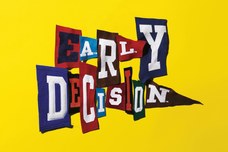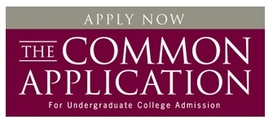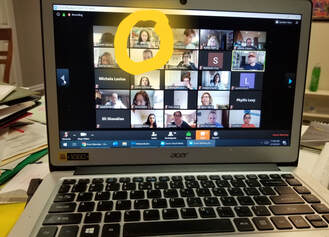|
We are carefully following the news and want to keep you updated on relevant changes in the college admissions world. And while we may be stuck at home, we’ve been busy participating in webinars and Zoom calls this week with other counselors and with experts including Jeff Schiffman (Director of Admission,Tulane University), Larry Alterman (Manager of East Coast Recruitment, Michigan State University), and Meredith Lombardi (Associate Director, Outreach and Education at The Common Application). Highlights:
In the News:
0 Comments
 You researched colleges, you visited campuses, you agonized over your choices and finally narrowed it down to your one chosen favorite – the lucky winner of your Early Decision (ED) application. After submitting the application in early November, you moved on – there were other applications to complete, midterms to take, and Thanksgiving break plans. But all of the sudden it is now December! You could actually hear back as early as next week from some schools (though most schools will notify applicants more towards the middle of the month). How can you stay calm while waiting for what feels like the most important decision of your life? Focus on the great schools you have already been accepted to. This time last year, one of our clients applying ED to Cornell had already received a generous scholarship to Tulane University. Another had been accepted to the Honors program at the University of Pittsburgh. A client who applied Early Decision to Bates College had been offered a substantial merit award from Clark University, and a student applying ED to Tufts was excited to have already been offered a spot at his dad’s alma mater, Indiana University. We encourage all of our clients to apply to at least one school with rolling decisions or early notification. That first acceptance does wonders for students’ stress levels! Stay off of social media. If your school is one of the later ones to release decisions, or if you didn’t get the news you were hoping for, do you really want to see pictures of your friend Johnny sporting all of his new Duke gear? Make sure all of your other applications are in. I know it is tempting to let your regular decision applications sit – after all, they aren’t due until January, and you may get good news from your Early Decision school in mid-December. But what if you don’t? Then you’re in a bad mood, it is Winter Break, and you’re doing a sloppy rushed job on your remaining applications instead of enjoying the holidays. Plus Murphy’s Law says that if you invest a lot of time on the other applications, you’ll end up getting into your Early Decision school, right? And at that point, you’ll be so happy you won’t care about the wasted time or application fees. Focus on your grades. Senior grades matter. A LOT. Particularly for regular decision schools, and any Early Decision or Early Action schools where you are deferred to the regular pool. These schools will all be waiting for your fall transcript, and these are the grades that tell them the most about the student you will be when you get to their campus. And if you are admitted Early Decision or Early Action, schools will still want to see your final transcript before you officially enroll. Last year I had a client who was questioned about her dramatic drop in grades second semester, and she had a rocky 48 hours in June where she wasn’t sure if the school was going to revoke her acceptance. Spend time with your family and friends. After all, in about nine months, you’ll be moving away – possibly to the next town, or possibly across the country. Cherish the time you have with your family and friends while you can. Have your mom teach you how to do laundry and boil and egg. Remember that there is more than one “perfect” school. You have a variety of schools on your list for a reason. They all have something to offer and if you put together a thoughtful list then they should all be schools where you know you can be happy and successful. Every one of my clients who did not get in to his or her ED school has ultimately been excited about his or her options. Continue doing the things you love. Hopefully all of those activities weren’t just for college applications. So keep volunteering at the soup kitchen, training for the half-marathon, or teaching kids to play piano. Hobbies are one of the best ways to relieve stress. I hear that some people find baking brownies to be very calming – if this is you, I can send you my address! Good luck making it through the waiting game of the next several weeks and/or months. For two great New York Times articles on coping with the stress of college admissions decisions, check out: College Advice for the Cost of a Single Post-it Noteand How to Survive the College Admissions Madness. And just remember Frank Bruni’s sage advice in his best-selling book title, “Where You Go Is Not Who You’ll Be.”  By now, many of you are probably thrilled to be finished with the college application process. While I do know of a few February 15 or later deadlines, all of our senior clients have finished their applications and have either sent in a deposit or are waiting for some decisions to be released next month. So, is there anything left to do on the college admissions front? Here are a few things to consider:
Enjoy the rest of your senior year, but not too much! Canada has become an appealing destination for U.S. undergraduates because of the opportunity to get a world-class international education at a more affordable cost and without crossing an ocean.
Today we attended a lunch meeting with representatives from The University of Guelph (Guelph, Ontario), Queen's University (Kingston, Ontario), Concordia University (Montreal, Quebec) and Bishop's University (Sherbrooke, Quebec) to learn more about the benefits of studying at a Canadian university. Here are some noteworthy facts we learned:
If you can stand the cold, it may be worth considering whether you might like to #LookNorth for your undergraduate education!  Image credit: Teen Vogue Image credit: Teen Vogue What is Early Decision II (ED II)? Early Decision II, similar to Early Decision I, is a binding commitment -- if you are admitted, you promise that you will attend. Once admitted, you must withdraw all other applications. Typically, ED II deadlines are the same as a school's Regular Decision deadline (though in some cases, i.e. Grinnell College, it can be earlier). What types of students should consider ED II? Early Decision II can be a great option for several types of students: -Students who were not admitted to their Early Decision I or first-choice Early Action school. You should hear from most Early Decision I and Early Action schools by mid-December, and most ED II applications are due in early January. -Students who only recently decided that a particular school is their top choice. You may not have been ready to commit by the ED I deadline but are now sure this is the right school for you. -Students who did not apply ED I because they were waiting for fall test scores or grades to bolster their applications. You are now a better candidate. Does every school offer ED II? Early Decision II is offered at many small liberal art schools that also offer ED I, and more schools are adding this option every year. Here is a good list of schools with ED II, but always check a school's website to confirm. According to a 2015 New York Times article: “Of the more than 625 colleges that use the Common Application, about 30 percent offer E.D. I; 13 percent offer both E.D. I and II. Among the latter are selective liberal arts colleges (Colby, Pomona, Swarthmore) and small private universities (Brandeis, Emory, Vanderbilt). But hardly any publics offer E.D. II., and no Ivys.” Does ED II carry as much weight as ED I? Applying early and making a binding commitment to a school nearly always improves your chances of being admitted. Many schools report their Early Decision statistics without distinguishing between ED I and ED II. But anecdotally, it is typically (at least slightly) more advantageous to apply ED I. For example, for last year’s freshman class, Hamilton College accepted 42 percent of ED I applicants and 32 percent of ED II applicants. Hamilton’s regular decision acceptance rate was 23 percent. What if I already submitted my application? Can I change it to ED II? In many cases, a school will allow you to convert your regular application to ED II, if you submit the required forms. Contact the particular school for details on how to proceed. Some schools will even allow this after the deadline has passed, if they have not yet reviewed your application. Can I apply ED II to the same school if I was not accepted in the ED I round? No. Once a decision has been made on your application, you may not apply to the same school until the following application year. When will I receive a decision? This varies by school, but many ED II deadlines are in January and decisions are released in mid to late February. We thought we'd post some fun facts to distract you from the stress of finishing college applications, studying for finals, and waiting for Early Decision results!
Did you know that.... Duke University loves monkeys! Established in 1966, the Lemur Center in Duke Forest is the world’s largest sanctuary for rare and endangered prosimian primates. The Indigo Girls, Amy Ray and Emily Saliers, chose their band name while students at Emory University in the mid-1980's. Both were English majors and transfer students, and they frequently return to campus for homecoming concerts. Can't bear to leave Fido home? Eckerd College in St. Petersburg, Florida, is one of the only colleges to have pet-friendly dorms. They even have a separate graduation ceremony for outgoing pets. The University of South Carolina is home to the state's only 360 degree rotating restaurant, Top of Carolina. USC's campus also hosts the National Advocacy Center, a centralized training center for the U.S. Department of Justice. Agnes Scott College, a tiny (but beautiful!) all-women school 6 miles east of Atlanta, has been the setting for numerous movies and TV shows, including Driving Miss Daisy, Scream 2, and The Blind Side.  Many schools give applicants the opportunity to interview with local alumni as part of the application process. In some cases, this is offered to all applicants, while others require applicants to follow specific procedures. For example, if you want “priority consideration” for an interview with a Duke alum, you need to submit your Regular Decision application earlier than normal - by December 20. At Carnegie-Mellon, you need to search the alumni directory and submit a request online. Be sure to check specific instructions for each school on your list. Alumni interviews typically occur in a public place like a coffee shop, and are generally low-key and conversational. Be sure to come prepared with questions for the interviewer, and do your homework to show you are excited about the particular school. Basic etiquette rules always apply – dress appropriately (suits are not required, but no ripped jeans or sneakers!), be on time, turn off your cell phone, and send a thank-you note. It never hurts to do a practice mock interview with a counselor or a parent! For some great insight on what questions interviewers typically ask, and what they are looking for, check out this recent article from Business Insider: “A former Harvard admissions interviewer shares the 5 questions she asked almost every applicant.”  by Bruce Vinik More than 6,000 professionals from the US and around the world have gathered in Columbus, Ohio for three days to take stock of the state of college admissions. It's where the Dean of Admissions from an Ivy League school can rub shoulders with a public high school guidance counselor from a small town in the Midwest. They are here to talk about all things college admissions, from recruitment strategies and standardized testing to high school advising and helicopter parents. On Thursday afternoon, I attended an educational session titled How Numbers Are Used (and Misused) in the Admissions Process. The presenters included a couple of high school college counselors, one independent counselor and Jon Boeckenstedt, the Associate Vice President of Enrollment from DePaul University. Within the world of college admissions, Jon is regarded as a numbers guru, someone who uses data to try to understand the intricacies of the college admissions landscape. The basic takeaway from the session -- pay attention to the right numbers, not the wrong numbers. The wrong numbers include all the different ranking systems that are out there, from US News and World Report to Forbes -- the data they use to formulate their rankings is arbitrary and misleading. The right numbers include data that individual colleges publish about their own admissions decisions. These numbers tell an important story. The panelists made one particular point that stuck with me, not because the point is new but because it reinforces something we tell parents and kids all the time. In getting into selective colleges, the difference between early decision and regular decision is often enormous. Most schools accept a much higher percentage of early decision applicants than regular applicants. It's not unusual for colleges to admit one out of four regular students vs two out of four ED students. That's a big difference and one that kids and parents need to think about seriously. The panelists were not passing judgment about the ethics of early decision; they were simply urging counselors to urge families to pay attention to the right numbers.  It is almost July, and essay questions for rising seniors are starting to trickle out. Here are a few that have been released recently:
FAQ: I’m about to finish my Junior year, when can I start working on the Common Application?6/1/2016  Good news! In past years, the Common Application was not available until August 1 before your Senior year. Starting this year, you can create an account and begin working on your Common Application in June (or earlier), and most of your information will rollover on August 1. For details on what will rollover and what will not, click here. For example, don’t bother working on the individual college supplements because those haven’t yet been updated for Class of 2017! But feel free to enter all of your demographic data, test scores, high school information, etc. For now, focus on your coursework and exams and on preparing for the SAT or ACT if you are taking it in June. But once Junior year is complete and the SAT and ACT are finished, it is time to at least set up your Common Application account so you can get as much as possible done over the summer. Senior year will be busy enough with your toughest classes, leadership positions in athletics or extracurriculars, and finishing up college visits and essays – completing the Common Application is an easy way to check something off your list while you have more free time! |
Categories
All
E-mail us at [email protected]
to learn more about our college, graduate school or career services. |
Vinik Educational Placement Services, Inc.

Vinik Educational Placement Services, Inc. * 4701 Sangamore Road, Suite S105 * Bethesda, MD 20816
301-320-9711 * [email protected]


 RSS Feed
RSS Feed